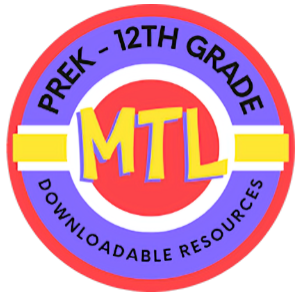Showing 21–38 of 38 resultsSorted by latest
-
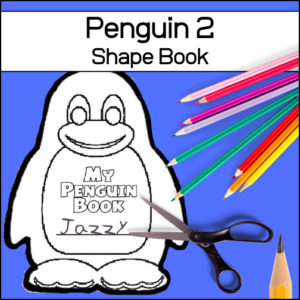 $1.50Buy Now
$1.50Buy NowStudying penguins or perhaps animals of the arctic? This cute shape book is ready for students to use to publish there own stories, reports or poems about penguins!
In this specific resource, single lined pages are used.
-
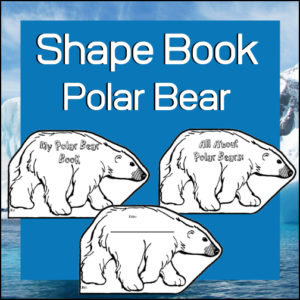 $1.75Buy Now
$1.75Buy NowStudents love to create and this resource, Shape Book – Polar Bears, will give them a fun template to create! Whether they are publishing a story, a poem or a brief report about the arctic, arctic animals or polar bears, their work will be extra special to them using these polar bear templates.
See description below for suggestions on how to use.
-
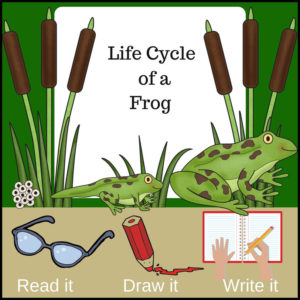 $2.00Buy Now
$2.00Buy NowThis cross-curricular (Science / Literacy – Writing ) product will have students creating their very own mini-books detailing the life cycle of a frog!
Knowledge students will learn:
The book will begin with the female frog laying her eggs near or in water. Students will then learn about the tadpole, what it looks like and what it eats and how it grows and turns into a froglet. They will learn how the froglet has developed the ability to breathe and live on land and then turns into a frog. Does a frog eat different things than a tadpole? Students will find out! At the end of the unit, there is also a coloring page of the different stages from egg to frog.
Students will: — read the text — draw a picture — write (copy) the written text
-
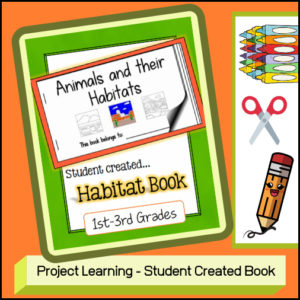 $2.50Buy Now
$2.50Buy NowHands-on learning! Students will create their own mini-book while learning about 8 different habitats, animals that live in those habitats and what animals need to survive in their habitats!
-
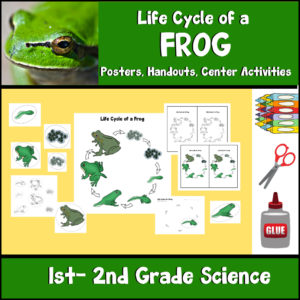 $2.50Buy Now
$2.50Buy NowThis 1st / 2nd Grade Science resource provides posters, handouts and center activities to help students learn about the life cycle of a frog! Seven stages are shown and pages come in color and b/w.
Easy to use and differentiated (Based on student ability – Easiest: Color the life cycle / Medium: Color, cut and paste the life cycle / Hardest: Draw the life cycle)
-
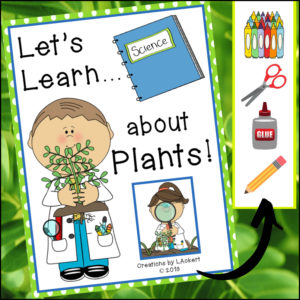 $6.00Buy Now
$6.00Buy NowLet’s Learn about Plants is a Science resource that can be used in conjunction with your own curriculum or as a separate – individual unit! Students will be actively learning as the cut, color, paste, write and learn! They will learn about the parts of a plant and the life cycle!
Plant vocabulary: seed, sprout, seedling, plant, roots, stem, leaf, soil, sunlight, water, air, flower, bud, trunk, branch, crown.
-
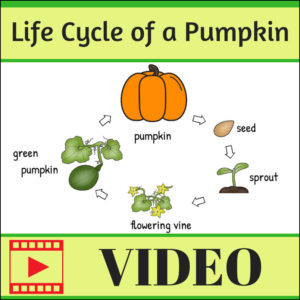 $3.00Buy Now
$3.00Buy NowLIfe Cycle of a Pumpkin Video is a great way to introduce or review the life cycle of a pumpkin. Great for visual learners!
Stages of the life cycle include: seed, sprout, flowering vine, green pumpkin, pumpkin (orange).
-
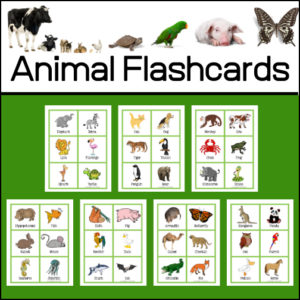 $2.50Buy Now
$2.50Buy Now42 colorful animal flashcards
Suggested uses:
- – to learn animal names
- – to learn classification (ex: sort by habitat, number of legs, mode of transport such as flying, running or swimming, etc)
-
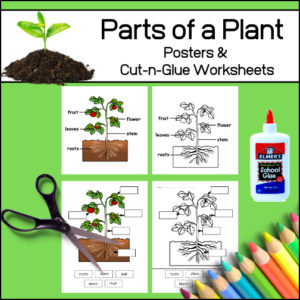 $1.75Buy Now
$1.75Buy NowThis resource includes two labeled posters (1 color – 1 b/w) and two cut-n-paste worksheets. It has been designed for younger students with only five parts of the plant listed: roots, leaves, stem, flower and fruit.
-
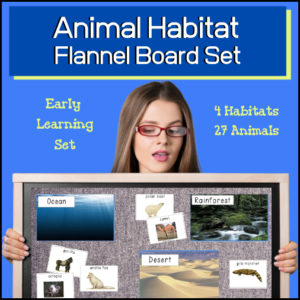 $2.50Buy Now
$2.50Buy NowHelp students learn to identify and classify animals by their habitat in which they live. This will be a fun Science activity for students as they sort animal cards among 4 habitats: Tundra, Desert, Ocean and Rain Forest. Great for a Science Center as well as using for a cooperative group activity!
Includes: 27 animal cards / 4 habitat scene cards
-
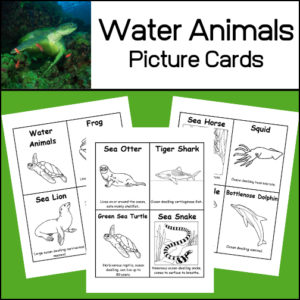 $1.00Buy Now
$1.00Buy Now11 animals that live in water – picture cards. Each card includes the type of animal, a short description and a picture to color.
Animals included are:- – frog
- – sea lion
- – trout
- – sea horse
- – squid
- – right whale
- – bottlenose dolphin
- – sea otter
- – tiger shark
- – green sea turtle
- – sea snake
-
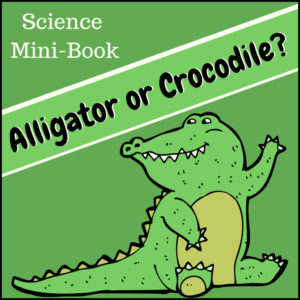 $1.50Buy Now
$1.50Buy NowHelp students learn the differences (and similarities) between an alligator and a crocodile with this resource and have a cute 18 page mini-book to create and color!
-
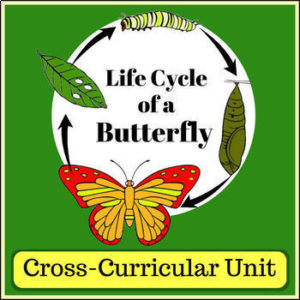 $4.00Buy Now
$4.00Buy NowButterfly Life Cycle Unit is a 49 page cross-curricular unit offering Language Arts, Science, Math and Art activities! By the end of your study, students will know all about the life cycle of the butterfly.
What is included? Puzzles, posters, worksheets (for tracing, matching, coloring, and completing the life cycle), coloring pages, songs, life cycle mini-book (for students to complete) and even a craft project.
-
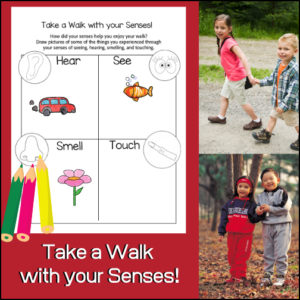 $1.00Buy Now
$1.00Buy NowThis worksheet has been designed for students to complete after taking a walk! While they walk, remind them of their senses (specifically hearing, seeing, smelling and touching). Once the walk is over, students will complete this worksheet by drawing pictures of what they experienced through those four senses.
-
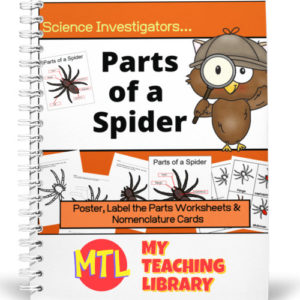 $2.00Buy Now
$2.00Buy NowHelp students learn the parts of a spider with this fun arachnid resource! Students will learn the following parts: eyes, fangs, cephalothorax, abdomen, spinnerets, legs.
Includes:
- – Color poster
- – 2 Worksheets – One for students to write and label, the other to cut and paste.
- – 1 Science Center activity
- – Nomenclature flashcards – Labeled
- – Blank Cards for students to complete
-
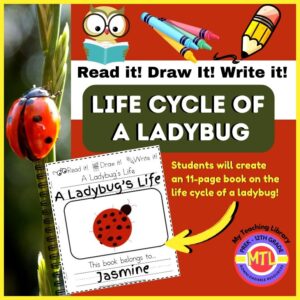 $3.50Buy Now
$3.50Buy NowA cross-curricular (Science / Literacy – Writing) product that will have students creating their very own mini-books detailing the life cycle of a ladybug!
Knowledge students will learn:
- -The ladybug is a beetle
- -Mother ladybugs lay tiny yellow eggs in clusters under a leaf
- -When the larva hatches, it eats. What do ladybugs eat? Students will find out!
- -What the ladybug pupa looks like before attaching itself to a leaf
- -The pupa grows, molts and changes…emerging as a ladybug!
Students will:
- -Read the text
- -Draw a picture
- -Write (copy work) the written text.
Benefits of this resource:
- -Low prep – print and give to students
- -Children learn about the ladybug life cycle while reading, drawing and writing
- -Encourages fine motor skills through coloring and writing plus scissor skills as the cut out each page along the dotted lines
- -Encourages reading skills as students read and copy the text
- -Finished book can be a keepsake Science mini-book and added to end-of-the-end portfolio.
What is included? 11 ready-to-use student pages
⭐⭐Use along or with: Ladybug Life Cycle | Posters and Worksheets
-
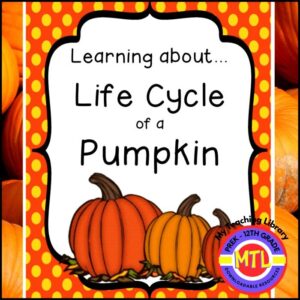 $3.00Buy NowThis unit covers the life cycle of a pumpkin!Includes:
$3.00Buy NowThis unit covers the life cycle of a pumpkin!Includes:-
B/W Life Cycle poster
-
Color Life Cycle poster
-
Word Wall Vocabulary
-
Sequencing cards
-
Life Cycle Worksheet (Cut-n-paste)
-
Life Cycle Vocabulary matching
-
Life Cycle Drawing
-
Life Cycle Shape Book activity
-
(Bonus Coloring page AND Pumpkin Seeds for counting)
-
-
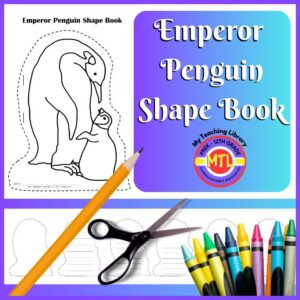 $2.00Buy Now
$2.00Buy NowStudying penguins or perhaps animals of the arctic? Here is a ready-to-use resource for students to publish stories, reports or poems about penguins.
You’ll find pages with both dotted-dashed lines as well as single lines so that you can use what best fits the level of your students.
